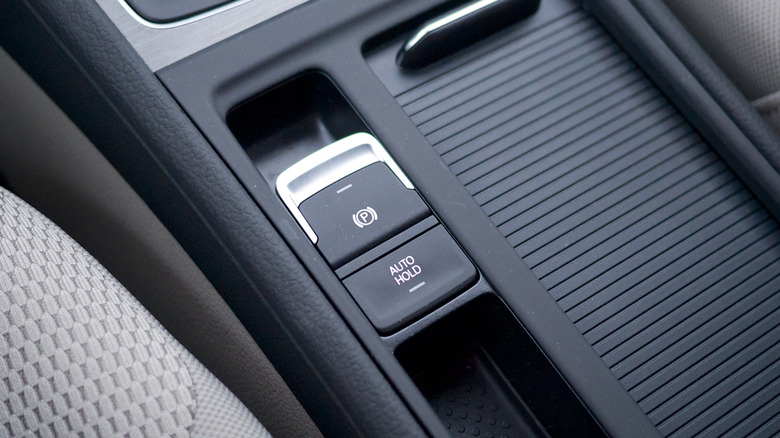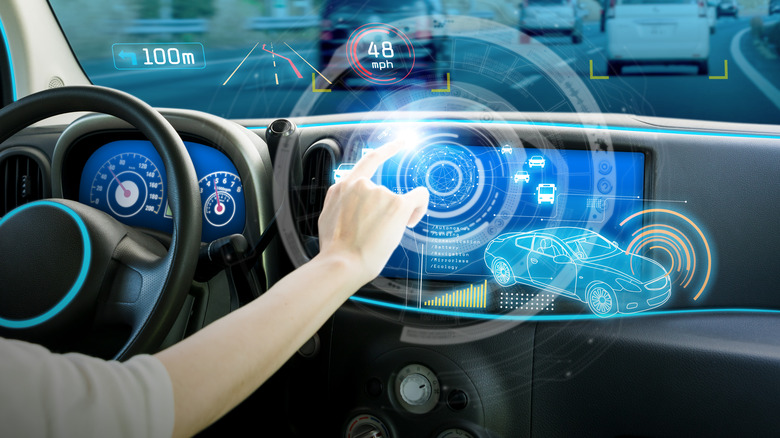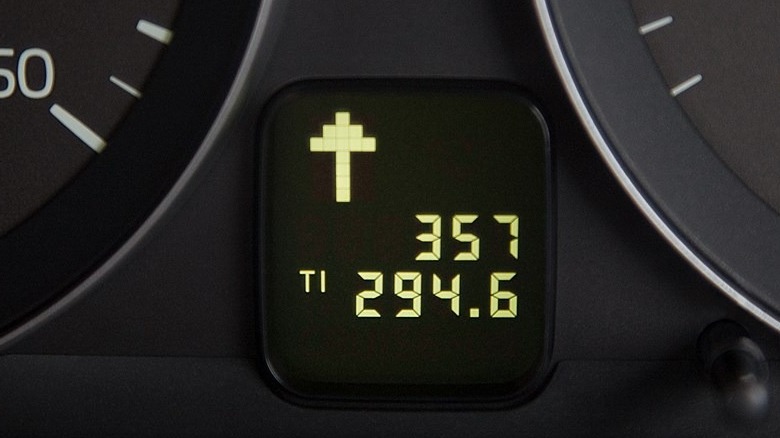6 High-Tech Car Features That Are Totally Unnecessary
We may receive a commission on purchases made from links.
Automotive technology has advanced light years, from the push-button starters that have replaced the hand-crank mechanism found on pioneering cars like the Ford Model T to various forms of driver-assist technology that help keep traffic flowing smoothly and without incident. Although some of the innovations in the industry are important to driver safety and vehicle efficiency, others add needless complexity to our vehicles without solving any pressing problems or adding any significant value.
Whether manufacturers had the best intentions or were looking to capitalize on the latest fad or gimmick, there have been plenty of misguided or unnecessary so-called improvements to modern vehicles that do little more than add to the cost of vehicles and the frequency and difficulty of repairs needed. Let's examine six useless technological gizmos that modern automakers have added to cars, trucks, and SUVs in recent years and discuss why we could have done without them.
Rain Sensing Wipers
The French automaker Citröen was the first manufacturer to use rain-sensing windshield wipers more than half a century ago, implementing the technology in its 1970 SM sedan. The system was unreliable, often failing to recognize changing conditions. Still, it became the model for modern digital systems like GM's Rainsense and others found in Mazda, Toyota, BMW, and Mercedes-Benz vehicles. Some of these systems use infrared sensors mounted on the rear-view mirror; others have sensors built into the windshield glass.
The sensors for GM's Rainsense system are embedded in the wipers themselves. Tesla's system eschews sensors altogether, relying on the vehicle's autopilot cameras to recognize when rain is falling.
None of these automatic systems have proven to be as reliable as a driver's eyes in detecting when rainfall is heavy enough to require turning on windshield wipers. Even those systems that vary wiper speed according to the volume of rainfall aren't as capable as the combination of the human brain and intermittent wiper timing when adjusting to variable rainfall and vehicle speeds. Automatic wipers are a prime example of a system that no customer needs and doesn't adequately do its intended job.
Electronic Parking Brakes
The parking brake is another vehicle feature that has been unnecessarily computerized in recent years. For decades, the parking and emergency brake was applied using a hand lever between the seats or a foot pedal. Still, many modern automakers have replaced those cable and lever systems with electronic switches mounted on the console or dash.
Along with introducing more unnecessary circuitry into vehicles, electronic parking brake mechanisms take away some of the tactile feedback between driver and automobile — leaving drivers to trust a light or dashboard indicator that their car is securely parked instead of a satisfying series of mechanical clicks. Because you can apply a mechanical parking brake gradually, they are also easier and safer to use as emergency brakes if the hydraulics in your main braking system fail.
In addition, where electronic parking brakes have multiple potential failure points like switches, fuses, wiring, and relays, mechanical parking brakes are vulnerable only to frozen cables and levers, poor adjustment, and routine wear.
[Featured image by Kārlis Dambrāns via Wikimedia Commons | Cropped and scaled | CC BY-SA 2.0]
Gesture Control
As the systems in our vehicles have gotten more powerful and complex, so have the mechanisms used to control them. While vehicles of half a century ago presented drivers with little more than a steering wheel, three pedals, a gear shift lever, and a handful of light switches, modern vehicles have a sometimes dizzying array of buttons, levers, screens, and steering column stalk controls. Some manufacturers have made a misguided attempt to simplify cockpit controls using motion sensors to read hand gestures. Still, many drivers have reported frustration with the systems failing to recognize intended signals or responding to movements that were not meant as instructions.
A 2020 report in Forbes Magazine found gesture control to be the most troublesome automotive technology in use at the time, with 36 reported problems per 100 vehicles. "The experience has been rough for owners," said Kristin Kolodge, a research executive with JD Power. "There's a level of frustration where they're experiencing inadvertent activations or distractions trying to get the technology to work right."
For decades buttons, knobs, and levers did a perfectly fine job allowing drivers to manage signaling, safety, climate control, and entertainment systems. Even simple touchscreen interfaces are more useful and present fewer distractions for drivers than gesture recognition systems, are often unreliable and frustrating, and take drivers' hands off the steering wheel.
Social Media Integration
Infotainment screens provide a convenient way to access maps, weather, music, and traffic information that can make our driving experience more comfortable and efficient. The ability to link car audio systems to our smartphones for hands-free calling, navigation, and the reading of text messages can make driving safer. With each passing year, social media becomes more influential in our lives; more than a third of the world's population checks in to their Facebook accounts on a daily basis, and TikTok users average more than an hour and a half of viewing on the app each day.
Considering these numbers, it's no surprise that automobile manufacturers have started integrating social media apps into their infotainment systems. General Motors, Honda, and Toyota all have in-dash systems that allow drivers to access social media apps like Facebook and X (formerly Twitter) while behind the wheel, and 2024 Mercedes-Benz E-Class models will come with a system that allows drivers to play Angry Birds, conduct Zoom calls, and view and post to Tik Tok from the driver's seat.
Mercedes will disable the system when the car is in motion in a concession to common sense. Mercedes CEO Ola Källenius told US News and World Report that integrating social media apps into Mercedes' cars was necessary to keep younger customers. "It is highly, highly relevant," he said. "Let's not forget that the average age of an S-Class owner in China is around or below 40 years old."
Even if other manufacturers implement the same safeguards as Mercedes to keep drivers from using these systems while in motion, having TikTok or Angry Birds available on a car's screen is superfluous, misguided, and potentially dangerous.
Mercedes cabin perfumes
Carl Benz paved the way for an entire industry when he built the Patent Motorwagen in the late 19th Century, but seeing what passes for innovation in the company that bears his name today must have him doing somersaults in his grave. In 2014, Mercedes introduced a cabin air freshener and fragrance system for its S-class vehicles that included a charcoal air filter and atomizer that allowed drivers to select from several different fragrances, which are packaged in vials that are plugged into an atomizer in the glove compartment.
Mercedes has since expanded the system to G-class, C-class, and E-class vehicles, marketing the Air Balance system as a way to create "a cleaner and more pleasant atmosphere for your vehicle's occupants." The system is a $350 option in the models for which it is available, and the six different fragrance vials are priced at between $136 and $171 each.
For the initial cost of the system, you could pack your back seat with mesh bags filled with activated charcoal, and the price of one vial of Mercedes perfume would buy a decade's worth of pine tree air fresheners to hang from your rearview mirror. However, such a lowbrow solution might be beneath most Mercedes owners.
Mercedes is, after all, selling an image and attitude, and that is reflected in the names it has given the fragrances: Pacific Mood, Nightlife Mood, Agarwood Mood, Downtown Mood, Sports Mood, and Daybreak Mood. Mercedes even offers an empty vial if buyers want to try to craft their own fragrance to use with the system and come up with their own mood-themed name for their creation, although that empty container is priced at $136, which would buy more than 40 Febreze pod-style air fresheners.
Shift Indicator Lights
Even though most cars sold in the United States are equipped with automatic transmissions, a few stick-shift vehicles are still available to stateside buyers, and three-pedal vehicles are still the norm in Europe and Asia.
Whether the shift mechanism is mounted on the floor or paddles behind the steering wheel, many manufacturers provide an indicator light on the dash to let the driver know when it's time to shift up to the next gear. Considering that nearly all manual transmission vehicles have tachometers very close to those indicator lights and almost all drivers can hear the revs of their engine build to a shift point (and even hearing-impaired drivers can feel an engine's vibrations), this extra reminder is unnecessary and borderline insulting to any skilled and experienced driver.
Technological innovations should be reserved for functions that enhance a vehicle's safety, efficiency, or performance capabilities. Shift indicator lights do none of the above and only provide a little bit of busy work for engineers, assembly line workers, and repair technicians.






